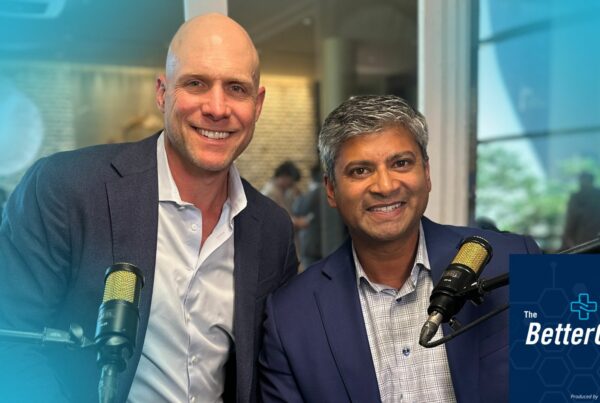A Vision for Interoperability with Stan Huff, MD
The following article is a summarized version of Episode 2 of The Better Care Podcast with Graphite Health CMIO, Stan Huff, MD. Some quotes have been slightly edited for brevity.
We Have a Patient Safety Problem
The vast majority of US healthcare providers would say they strive to keep patients safe – it’s usually why they went into the field – and administrators of health systems would also tell you patient care and safety is a chief concern of theirs.
There are many programs in place across the nation to promote quality care, and yet human, medical errors are a leading cause of death in the US. In fact, the overall misdiagnosis rate is approximately 10% to 15%.
“We’re not providing good care for patients. A study published in the Journal of Patient Safety, estimates that there are 210,000-440,000 deaths per year in the US due to preventable harm in hospitals.
Based on my own experience and that of my family members and others, it’s clear that preventable medical errors are all too common. When you consider that this means over 600 people will die today alone from preventable medical errors, it’s shocking. It’s surprising that this issue hasn’t received more attention.” – Stan Huff
Given the rapid pace of technological advancement across industries, it begs the question why the healthcare sector has not done more to prevent medical errors. If the incentive for better patient care alone is not sufficient motivation, it is worth highlighting that medical errors incur significant costs, amounting to approximately $20 billion annually.
What is Interoperability in Healthcare?
Interoperability allows different IT systems to exchange data efficiently between healthcare providers, patients, and other relevant parties. Interoperability has the potential to improve patient care, increase efficiency, and reduce healthcare costs.
More importantly, it can reduce the risk of medical errors by providing healthcare providers with a more comprehensive view of a patient’s medical history, medications, and other important information.
There are standards that exist to make healthcare interoperability possible. These standards have a common language that is necessary to ingest and communicate information needed to improve care delivery. These standards include HL7 (standards development organization), LOINC (terminology standards), HL7 V2 (content standards), and FHIR (transport standards).
“HL7 V2 is primarily focused on programming language and data structure. Prior to its creation, each lab system would create their own names for lab tests, resulting in the need for manual mappings between systems. The standard code provided by HL7 V2 allows for more efficient transmission of data without the need for one-to-one mappings. SNOMED, on the other hand, differentiates between the name of the procedure and the name of the resulting data.
LOINC and SNOMED typically work together. LOINC codes are used to ask a question while SNOMED provides codes for the answer when needed. This distinction is important for accurate and efficient data exchange in healthcare systems.” – Stan Huff
FHIR was developed by HL7 and is a standard for safely exchanging healthcare information electronically between different healthcare systems. FHIR allows computers in different locations to talk to each other, ensuring that patient records are available where needed.
Using Interoperability in EHR systems to Improve Patient Safety
Creating interoperability can help improve clinical decision support, reduce administrative burden, and ensure patient safety. In a 2022 study on The Impact of Electronic Health Record Interoperability on Safety and Quality of Care in High-Income Countries, it was found that EHR (Electronic Health Record) interoperability positively influenced medication safety, reduced patient safety events, and reduced costs.
EHR Interoperability can be achieved by implementing standards such as FHIR to standardize data and communication, giving EHRs the ability to communicate with each other. FHIR is designed for easy integration with EHRs, but unfortunately, momentum to adopt FHIR has been slow.
“There are various reasons why adoption is slow, including business, cultural, and social issues…. The best behavior is often not incentivized by financial gain. Even companies with large market shares may resist interoperability and supporting standards like FHIR due to concerns about protecting their intellectual property. However, prioritizing these concerns over patient care isn’t in the best interest of society or of patient care.” – Stan Huff
A Vision for the Future of Interoperability
Interoperability is essential in solving many of the issues health systems are facing today such as low quality care, inflated costs, and physician burnout. But achieving interoperability is not possible without a shift in priorities from hospital leadership.
“If we had true interoperability, people could create useful applications to better care for patients, such as diagnosing and managing conditions like occult sepsis, deep venous thrombosis, and chronic anticoagulation.
With plug-and-play interoperability, these applications could be made once and used widely at every doctor’s office, and every hospital… Executable knowledge in programs is transforming healthcare. Medical schools could benefit greatly as every disease could become like weather forecasting with accessible data and new knowledge.” – Stan Huff
Organizations like Graphite Health have created the foundation for this type of “plug-and-play” interoperability that allows clinical decision support software and health system applications to be more quickly verified and implemented.
Listen to the full interview on Episode 2 of The Better Care Podcast – A Vision for Interoperability – Stan Huff, MD of Graphite Health available on all major podcast platforms.









